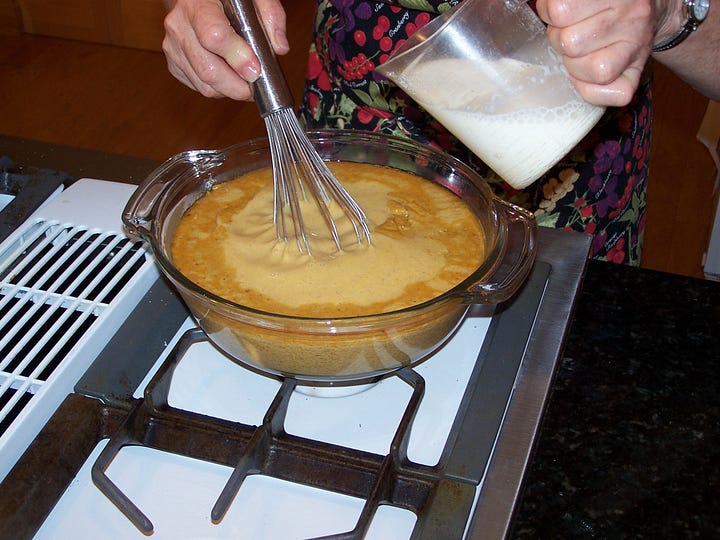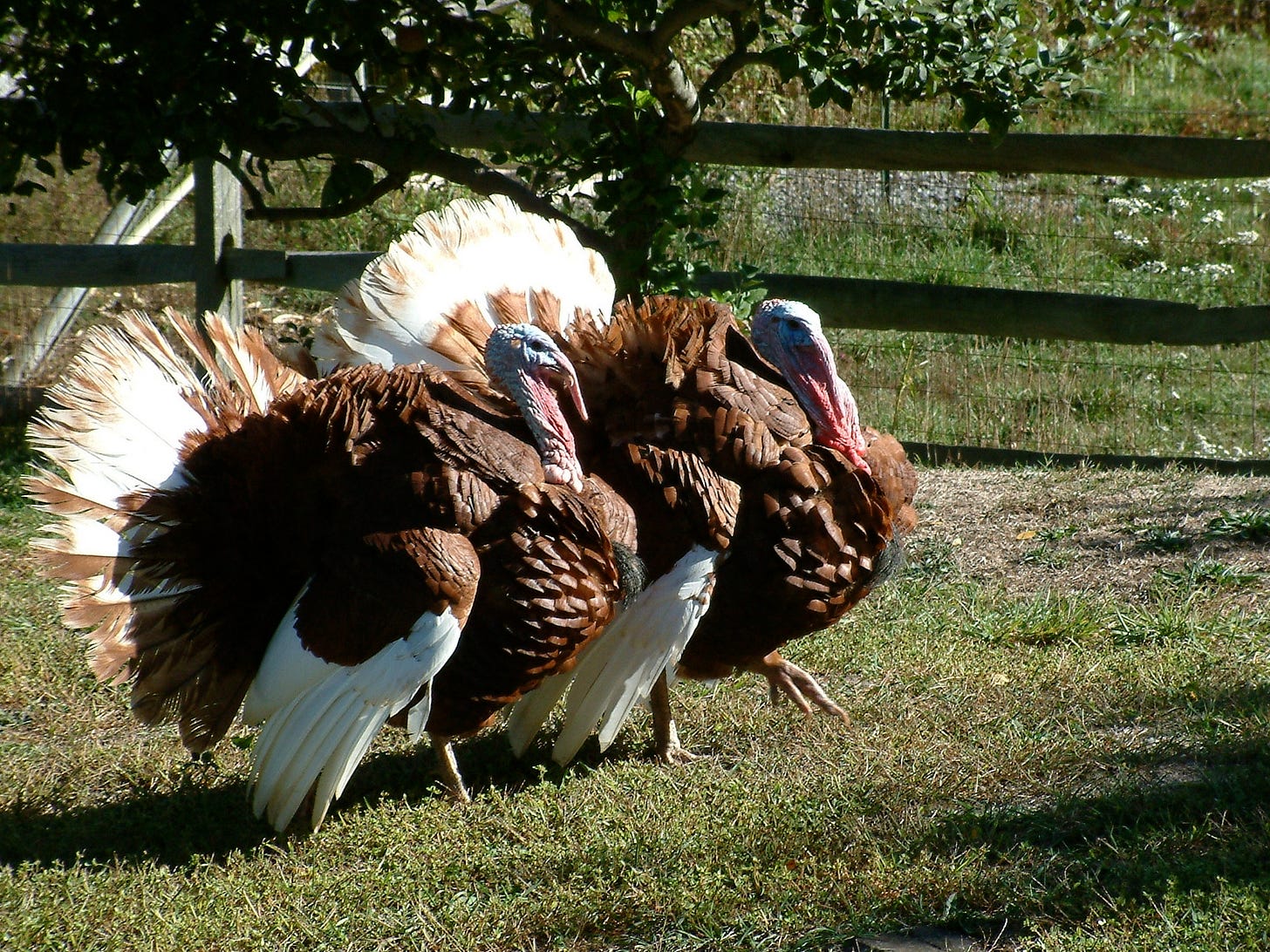How happy were those surviving colonists, one year after their arrival at Plymouth Rock, having braved a winter that reduced their number by more than half? They forged a new life in a new world and made friends with some of the natives there, who showed them how to grow and use indigenous plants to feed themselves. They fashioned houses from the forest and built palisades around their village with its wide view of the open sea and the life of relative refinement that they had abandoned in England.
They brought their recipes with them, especially for the popular puddings of the day, and adapted the ingredients with what they had on hand. Indian Pudding is a recipe derived from English cookery that resonates with Native American ingredients and may well have been on the table at the first dinner that gave thanks for the harvest in 1621.
Our own celebration of Thanksgiving is an adaptation, with roots in the past, but embellished with what we have come to expect since Abraham Lincoln first proclaimed a National Day of Thanksgiving to be celebrated on the last Thursday in November in 1863.
What is documented to have been on the table at that first Thanksgiving was venison and waterfowl—ducks or geese—though wild turkey is also a possibility. Squash was plentiful, so pumpkin is likely, though not in the form of a pumpkin pie that is tomorrow’s traditional dessert. Flour supplies were depleted after a year in America and there was no oven built at that time at the settlement. Food was cooked over an open fire, roasted on a spit, or boiled in a cauldron.
Puddings provided a taste of home and were a source of nourishment that preceded many meals. Oats were available in England and were the key component in hasty pudding, a recipe adapted by the Pilgrims to include the hard, flint corn grown in New England. Corn mush, Indian mush, and Indian pudding were some of the names for the hasty pudding of the New World, immortalized in the somewhat querulous but all-American tune, Yankee Doodle:
“Father and I went down to camp
Along with Captain Goodin,
There we saw the men and boys
As thick as hasty pudding”
The only required ingredient in Indian pudding is dried corn, that quintessentially American grain that adapts as well to empanadas and cornbread as to polenta and grits. The sweetener can be molasses, honey, or maple syrup. Eggs and milk provide a creamy custard texture and optional ingredients can be pureed pumpkin, berries, or raisins.
Here is an American classic that can lend an authentic touch of New England to your Thanksgiving table—and all the ingredients are probably in your pantry.
Enjoy your Thanksgiving feast tomorrow and count your blessings.



Pumpkin Indian Pudding with Crème Fraiche
Serves 8
4 cups milk
5 tablespoons yellow cornmeal
2 tablespoons melted butter
three-fourths cup maple syrup or a honey and molasses combo
one-half cup canned pumpkin puree (or very well-drained steamed or roasted pumpkin)
1 teaspoon cinnamon
one-half teaspoon of ground ginger
one-half teaspoon of freshly grated nutmeg
one-fourth teaspoon of ground cloves
1 teaspoon salt
2 eggs, beaten
1 cup cold milk
Garnish:
1 cup heavy cream
one-third cup of sour cream
Make the garnish ahead of time. Combine heavy cream and sour cream and set aside in a warm place for a couple of hours and then refrigerate.
Preheat the oven to 300°F. Butter a 2-quart baking dish and set aside. Scald the 4 cups of milk in a 2 or 3-quart saucepan (bring it up to just under a boil) and sprinkle in the cornmeal while whisking. Cook and stir over a low heat until thickened. Remove from the heat and mix in the melted butter, maple syrup (or sweetener of choice), pumpkin puree, cinnamon, ginger, nutmeg, cloves, and salt. Add some of the cornmeal mixture to the beaten eggs to temper them, and then stir the tempered eggs into the saucepan. Pour the cornmeal mixture into the prepared baking dish and bake for 45 minutes. Remove the pudding from the oven and whisk in the 1 cup of cold milk. Continue to bake for an additional hour. The pudding can be served hot, warm, room temperature, or cold, topped with a dollop or drizzle of the crème fraiche.
This article is adapted from one that ran in the Centre Daily Times in 2006.




